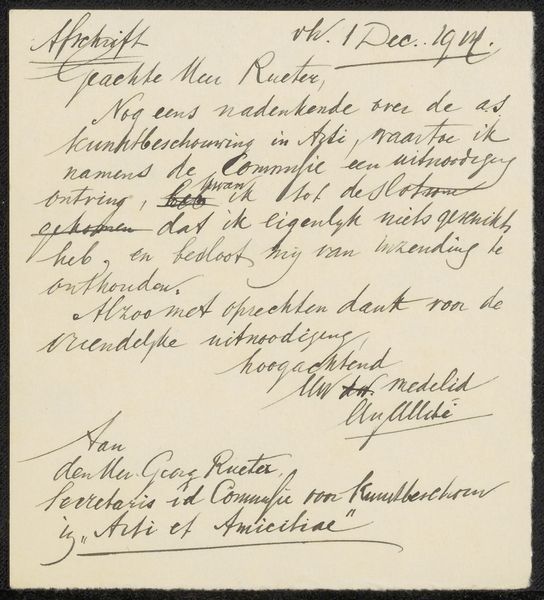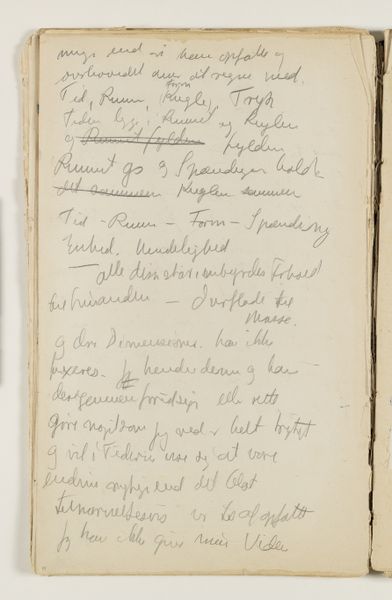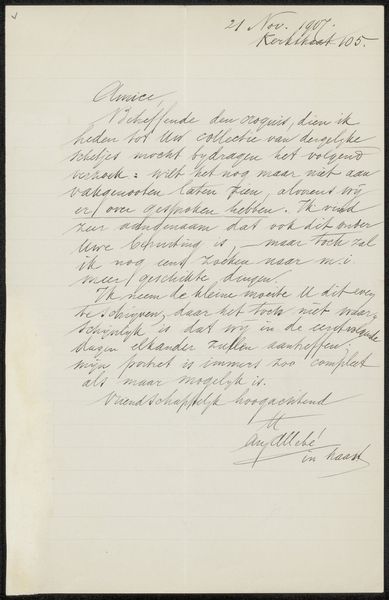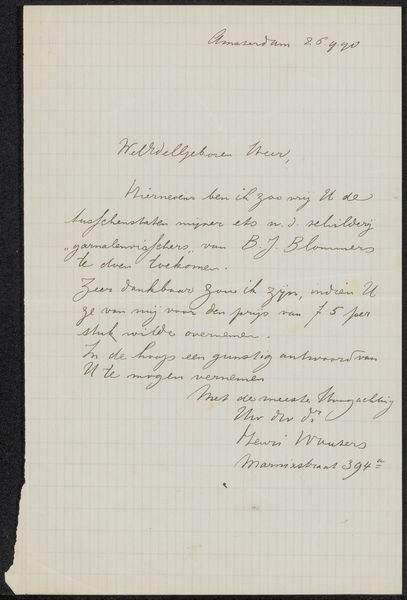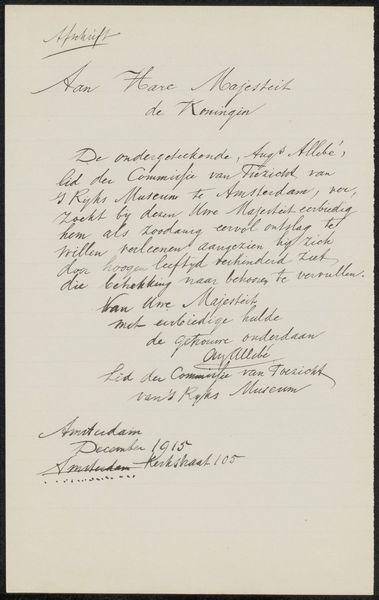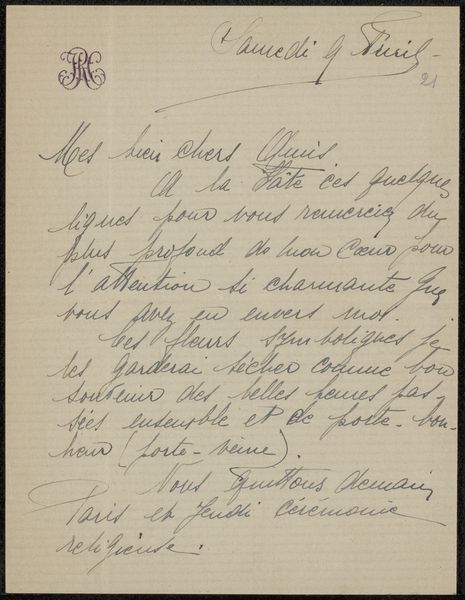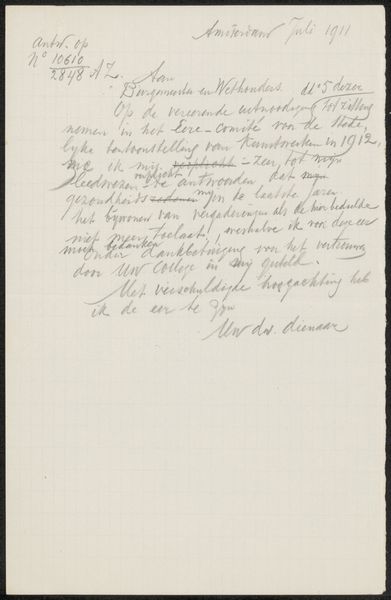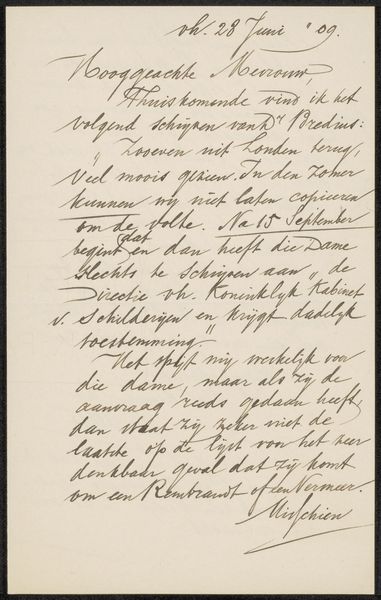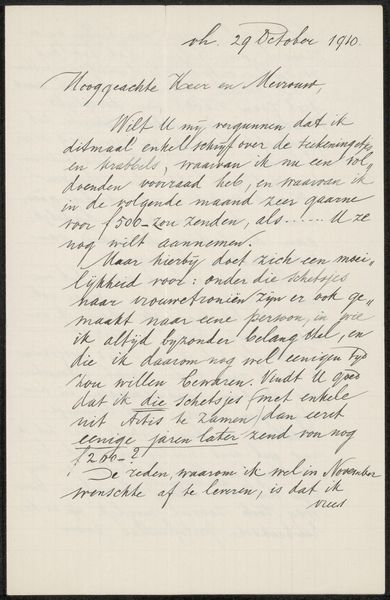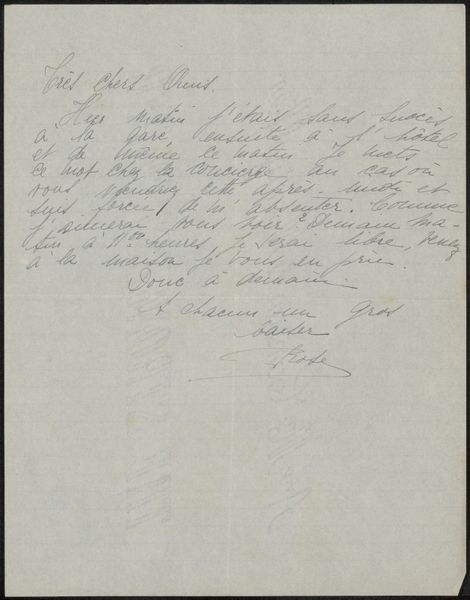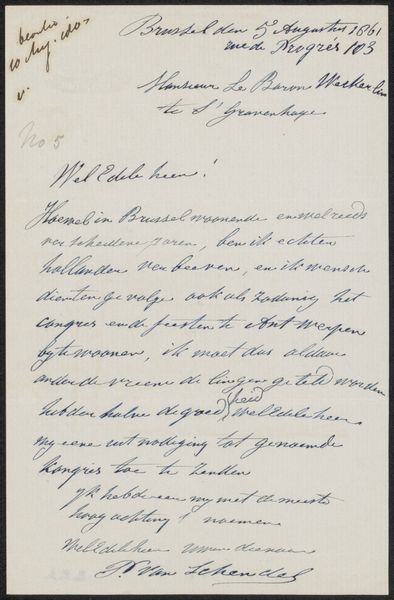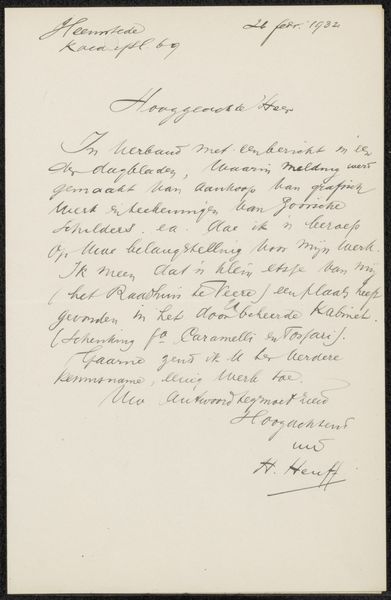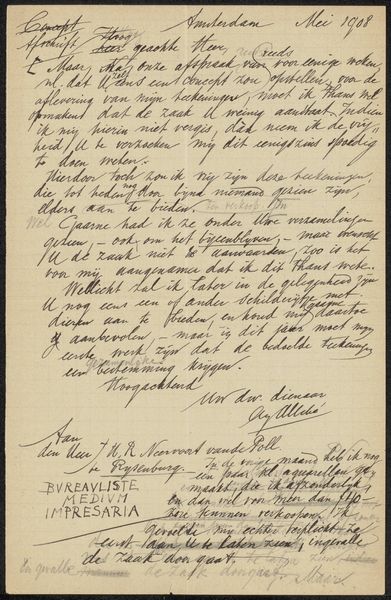
drawing, paper, ink
#
portrait
#
drawing
#
aged paper
#
hand written
#
hand-lettering
#
hand drawn type
#
hand lettering
#
paper
#
personal sketchbook
#
ink
#
hand-written
#
hand-drawn typeface
#
fading type
#
calligraphy
#
small lettering
Copyright: Rijks Museum: Open Domain
Editor: So, this piece is titled "Citaten over Jan Pieterszoon Coen" by Carel Adolph Lion Cachet, dating roughly from 1874 to 1945. It’s ink on paper, a drawing of sorts. It really strikes me as a personal sketchbook page – very informal and immediate. What catches your eye about it? Curator: The very materiality of it. Look at the paper, likely a common, mass-produced stock of its time, perhaps even repurposed. And then the ink, a basic medium easily available. These choices speak volumes about the artist's priorities. It suggests a focus on process and accessibility over preciousness. Is it meant to be displayed as “art”, or something more immediate? Editor: That's interesting, I hadn't considered the choice of materials as a conscious statement. So, it’s less about refined skill and more about…? Curator: More about the act of recording and disseminating these quotations regarding Coen, a controversial figure tied to Dutch colonial history. The handwriting itself, a form of manual labor, highlights the physical effort in reproducing and preserving these thoughts, bringing them back to life, as it were. Note, if you will, the care, attention, or lack of thereof, invested by the hand writing these excerpts on each line of the page. Is there an emotional component informing legibility? Editor: I see your point. The “hand-made-ness” clashes with the subject’s political significance. The writing style seems almost utilitarian rather than decorative. It brings forth the idea that this is merely about archiving. Curator: Exactly! And perhaps questioning the narratives around colonialism itself. By presenting these quotes raw, unedited, and on such a humble material, Cachet avoids glorifying or romanticizing a complicated past. Do the sources of quotes lend further insight into who had opportunity to create and record that history? Editor: So the drawing invites us to critically examine the means by which history is recorded and who gets to do the writing. It seems almost like he is recontextualizing the creation and distribution of knowledge. Thanks for clarifying this artwork to me! Curator: Precisely. Examining art through the lens of its creation can reveal powerful social and political insights that a simple visual appreciation might miss. Thank you for considering it from a production standpoint.
Comments
No comments
Be the first to comment and join the conversation on the ultimate creative platform.
